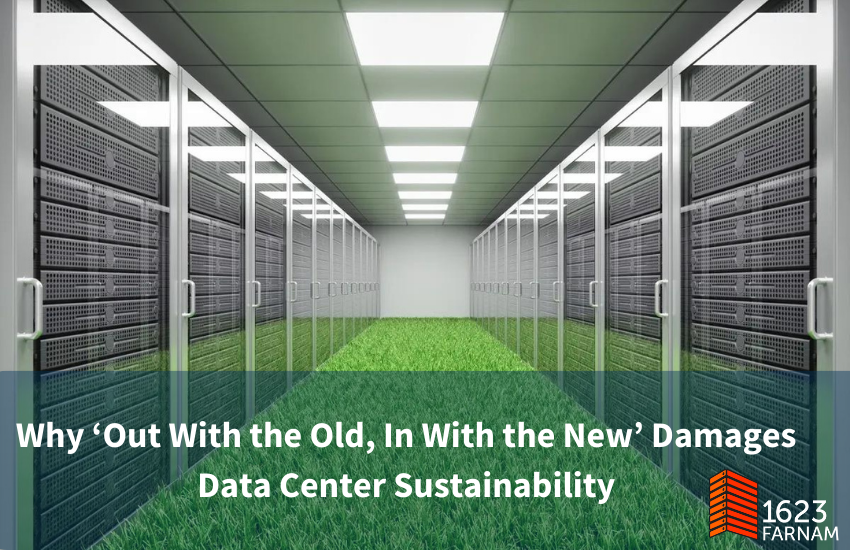Aside from the case of museums or high-value historical artifacts and locations, humanity has seemingly always put a high premium on newness. As our world has evolved and become fixated on progress, the ideal, progress-oriented mindset became expected — and that means always casting aside ‘legacy’ ideals, strategies or objects in favor of brand new, shiny and state-of-the-art assets and perspectives.
With that in mind, a controversial statement: New doesn’t always mean innovative, and it doesn’t even necessarily mean better. Yes, we stand by that claim even when it comes to the high-tech world of data centers and IT.
The Catch-22 of ‘Purpose-Built’
Over time, as the language of data centers has developed, this premium on newness has led many providers to highlight the idea of a ‘purpose-built’ data center as the ‘it’ commodity of IT. These facilities are touted for their advanced capabilities derived from the idea that they were built from the ground up with innovative data strategies in mind. Nobody can deny that that’s an attractive statement — especially in a competitive world where everyone is looking for even the slightest leg up for security, mobility, speed and beyond.
However, there’s another major factor at play that has changed this narrative significantly: sustainability. As a result of global campaigning for cleaner, greener data strategies, a data center’s ability to reduce its impact on the environment and clean up its carbon footprints now rivals even its ability to deliver on other established table stakes like connectivity, space and power. A purpose-built facility, in some ways, flies directly in the face of this vital pursuit of green IT, and it’s high time that the industry starts weighing the costs and benefits of this rabid hunger for ‘new.’
In truth, existing facilities that are retrofitted and repurposed for data center usage need not wear the stain on their resume that ‘purpose-built’ facilities have inadvertently put there. In fact, they can (and do) offer just as much security, rich connectivity and robust space and power — all while reducing embodied carbon and preserving opportunities for the green tenets of reducing, reusing and recycling.
Why a Repurposed Facility Wins on Sustainability
Embodied carbon is a big measure of a data center’s sustainability.
[Embodied Carbon: a sum of all the greenhouse gasses produced by the processes surrounding gathering, manufacturing, transporting and building a facility.]
Naturally, whether or not an entire data center building or campus is built new can have huge implications on how large that measure of embodied carbon is. When you consider that new building construction is responsible for approximately 40 percent of annual global greenhouse gas emissions and 40 percent of all raw material consumption, the problem with building from scratch is pretty clear.
When you see data centers through this green lens, retrofitted data centers are no longer second-class citizens — instead, they might be a foundational way to achieve materials efficiency, in turn reducing embodied carbon. Of course, all of this exists in an admittedly gray area: Some retrofitted facilities may require huge amounts of modernization, which can end up outpacing any original savings on carbon emissions, but in the end, this still presents a strong case for not immediately falling in with the ‘purpose-built’ crowd. Furthermore, when retrofitted data centers are situated in locations with green opportunities, invested in mindfully and supported with additional sustainable technologies (we’re proud to say that this is how we roll at 1623 Farnam), that can present a pretty strong marker of environmental advantages.
So, what’s the upshot? Can we really know based on whether a facility is new and purpose-built or retrofitted whether it ranks higher on the green scale? Unfortunately not — and it will probably never be that simple. The key here is to acknowledge that since sustainability is now a major player in this IT game, selecting the right location might not be as black and white as it was before.
To learn more about how 1623 Farnam is building sustainability into its data center offerings, click here.


